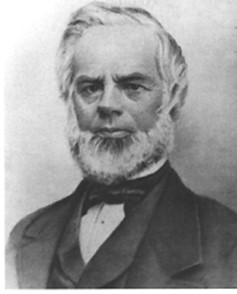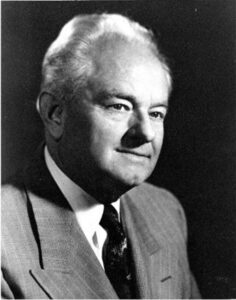What is Religious Science?
Religious Science is a New Thought philosophy based on the writings by Ernest Holmes, especially The Science of Mind. The primary organization based on Religious Science philosophy is the Centers for Spiritual Living, with more than 400 ministries and works in over 30 countries around the world. The Center for Spiritual Living Tahoe-Truckee is one of these ministries.
Who were major influences on Ernest Holmes and the Science of Mind?
There are several creative thinkers who greatly influenced Ernest Holmes as he moved along his spiritual path and developed Science of Mind. They were:
- Ralph Waldo Emerson, a New England philosopher and essayist
- Thomas Troward, a British jurist and metaphysician
- Phineas Parkhurst Quimby, a mental healer
- Emma Curtis Hopkins, an American teacher and mystic

Ralph Waldo Emerson (b. May 25, 1803 – d. April 27, 1882)
Emerson has been called “the Father of New Thought” because he was instrumental in gathering together intellectuals, writers and philosophers to explore transcendental philosophy.
Emerson was a Unitarian minister, writer and speaker. He believed that every person is an individualization of the one and only God. He thought that at the center of our being we are all operated on by spiritual laws which execute themselves.
Emerson is not considered to be a New Thought figure, but one of the sources from which New Thought drew a great deal.
 Phineas Parkhust Quimby (b. February 16, 1802 – d. January 16, 1886)
Phineas Parkhust Quimby (b. February 16, 1802 – d. January 16, 1886)
Phineas Quimby was an American mental healer whose ideas greatly influenced the New Thought movement. He originally studied mesmerism and became a practitioner of hypnosis. He claimed that he could heal by mere suggestion. Quimby believed that illness originated in the mind and was created by erroneous beliefs. He taught that when a person opened their mind to God’s wisdom, they could conquer any sickness. One of his patients and disciples was Mary Baker Eddy, the founder of Christian Science.
 Thomas Troward (b. Unk., 1847 – d. May 16, 1916)
Thomas Troward (b. Unk., 1847 – d. May 16, 1916)
Thomas Troward was born in India, educated in England and returned to India to become a Divisional Judge. His chief interest lay in exploring Indian religions and studying comparative religion. He was familiar with Indian lore and sacred writings as well as other ancient texts. He was an ardent student of the Bible. The concept of reincarnation had a strong influence in his thinking. Troward formulated a theory of mental healing which he called “Mental Science “.
 Emma Curtis Hopkins (b. September 2, 1849 – d. April 8, 1925)
Emma Curtis Hopkins (b. September 2, 1849 – d. April 8, 1925)
Emma Curtis Hopkins influenced New Thought more than any other single teacher. At the age of 29, she sought treatment for an illness from Mary Baker Eddy (founder of Christian Science) and was healed. She was so moved that she devoted herself to the study and growth of the Christian Science approach. Within a short time, her quest for spiritual truth led her to explore other metaphysical writings. She left Mrs. Eddy and moved to Chicago where she established the Christian Science Theological Seminary, an institution founded to promote teachings similar to those of her mentor. She quickly won a following. Among those influenced by her lectures were:
- Melinda Cramer and Nona Books, co-founders of Divine Science;
- Charles and Myrtle Fillmore, who established the Unity School of Christianity.
- Harriet Emilie Cady, author of Lessons in Truth;
- Annie Rix Militz, founder of The Home of Truth; and
- Ernest Holmes, founder of Religious Science.
Because her influence was so pervasive in these New Thought organizations, Emma Curtis Hopkins came to be called the “Teacher of Teachers.”
 Ernest Holmes (b. January 21, 1887 – d. April 7, 1960)
Ernest Holmes (b. January 21, 1887 – d. April 7, 1960)
Ernest Holmes was the author of The Science of Mind (1926) and founder of the Religious Science movement. Science of Mind is a spiritual philosophy that easily applies to everyday living while expanding the student’s sense of their relationship to God and their place in the Universe. This teaching integrates elements of eastern and western spiritual traditions with the latest teachings of science, psychology and philosophy.
Holmes was a passionate seeker of knowledge who embarked on a path of independent thinking at age 18. He was deeply moved by the works of Ralph Waldo Emerson and Thomas Troward which contributed to the philosophy that was formulating in his mind. He was also touched by the work of Emma Curtis Hopkins who had begun to influence other New Thought leaders.


 Phineas Parkhust Quimby (b. February 16, 1802 – d. January 16, 1886)
Phineas Parkhust Quimby (b. February 16, 1802 – d. January 16, 1886) Thomas Troward (b. Unk., 1847 – d. May 16, 1916)
Thomas Troward (b. Unk., 1847 – d. May 16, 1916) Emma Curtis Hopkins (b. September 2, 1849 – d. April 8, 1925)
Emma Curtis Hopkins (b. September 2, 1849 – d. April 8, 1925) Ernest Holmes (b. January 21, 1887 – d. April 7, 1960)
Ernest Holmes (b. January 21, 1887 – d. April 7, 1960)